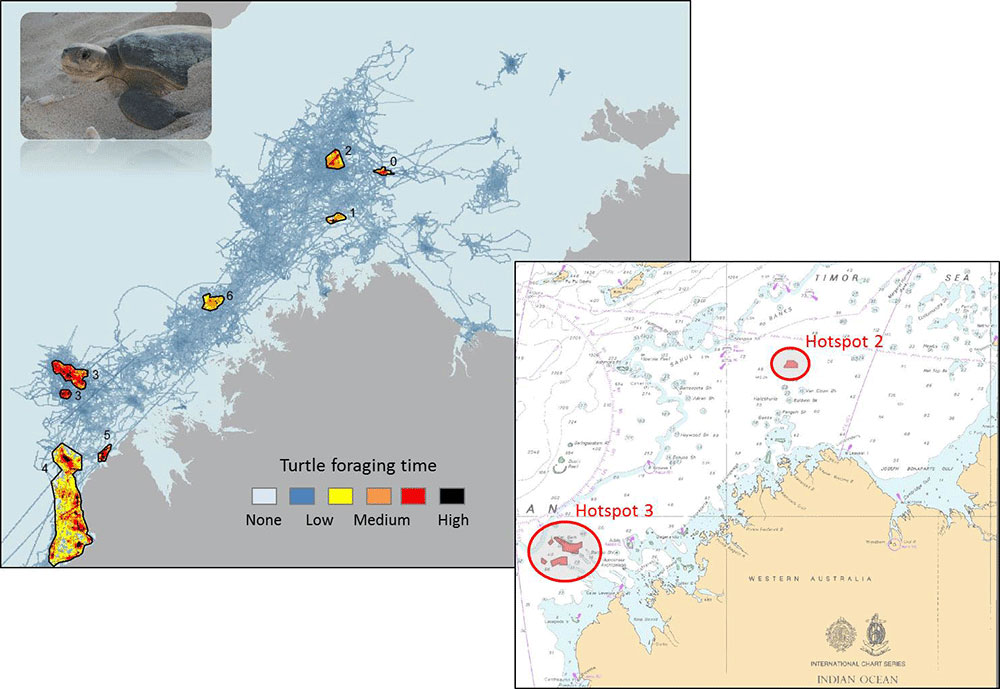This week, a team of scientists, across multiple organisations, journey to the foraging grounds of Australia’s very own flatback sea turtle to uncover the surprisingly elusive answer to what should be one of life’s simple questions: What do flatback sea turtles eat?
Flatback turtle nesting. Image: Phillipa Wilson
The expedition builds off of preliminary work by researchers from Western Australia’s Department of Parks and Wildlife (Parks and Wildlife) and the Australian Institute of Marine Science (AIMS) which identified likely feeding hotspots for the vulnerable species.
The hotspots were uncovered by compiling and analysing data collected from satellite transmitting devices affixed to turtles from eight West Australia nesting beaches. The results led scientists to focus their search for answers to a few specific locations in the relatively unexplored and pristine tropical waters of north-west Australia’s remote Kimberly region.
Hotspots of flatback turtle foraging time in NW Australia’s Kimberley region, 2008-2010 obtained from flatback turtle satellite tracking data provided by: BHP Billiton, Chevron Australia, Parks and Wildlife, Pendoley Environmental, Rio Tinto and Woodside.
With AIMS-led research trips already underway in this region (as part of the Western Australian Marine Science Institution Kimberley Marine Research Program), scientists are provided a window of opportunity to collect field data including observations of the turtles’ feeding grounds and samples of potential prey species, such as urchins and sea cucumbers.
Travelling aboard the R/V Solander, researchers from CSIRO, Curtin University and the Western Australian Museum are already delivering the much needed data for two of the three main hotspots as they cruise from Broome to Darwin. This research will not only provide valuable insights into the feeding ecology of the flatback sea turtle, but will also enable AIMS scientists to develop a detailed habitat map for the species - a valuable tool for Parks and Wildlife resource managers working towards the sustainable management of turtle populations.
Flatback sea turtles (Natator depressus) are native to northern Australia and are one of only two sea turtle species that are not globally distributed (7 species in total). Nesting occurs only on tropical Australian beaches, many in NW Australia’s remote Kimberley region.
Read more: http://northwestatlas.org/node/1665
Follow trip progress on Twitter: @northwestatlas



